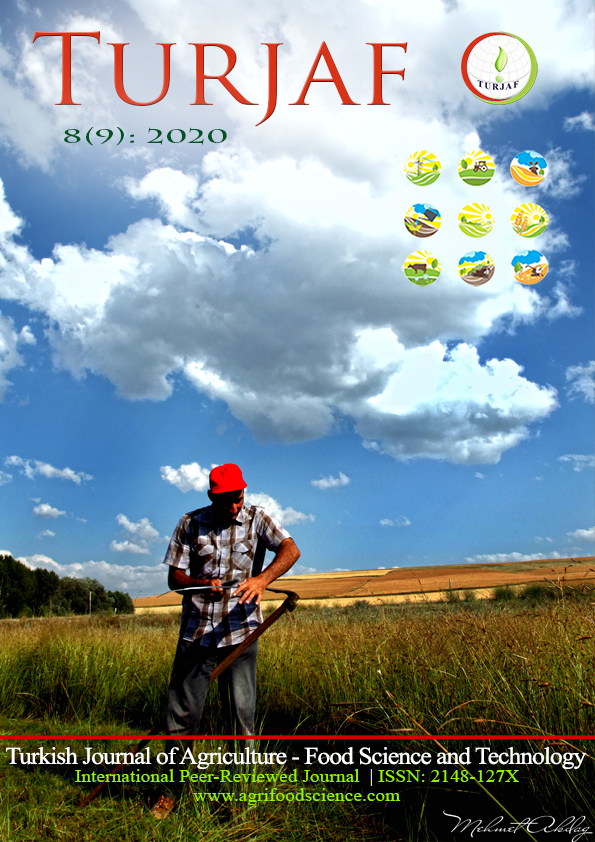Determination of Flower, Pod and Seed Characteristics Related to Yield Components in Forage Pea Genotypes
DOI:
https://doi.org/10.24925/turjaf.v8i9.1994-1999.3614Keywords:
Pea, petal, trait relation, fresh weight, CorrelationAbstract
In this study which was carried out during the 2015 summer season in Eskişehir, the flower, pod and seed characters attributed to yield components were investigated in 12 forage pea genotypes. They showed significant differences in terms of agronomic and morphological (flower, pod, and seed) traits. The highest fresh hay yield with 2171 kg/da and plant height with 106.6 cm were obtained from Populasyon-1. Crackerjack had lower values in some flower traits such as, whereas the higher values of pod and seed traits were obtained from cv. Rose. In addition, Population-1 included in the higher value group for standard petal width, keel petal length, calyx tube and teeth lengths, and flower length. Although cluster analysis did not reflect agronomic traits, the clustering resulted in four groups. The first group consisted of Özkaynak 1, 2, and 3 and Taşkent, Töre, and Population-2, which were the standard petal colour violet, light, and dark violet. Population-1 had both violet and white standard petal; however, it was included in the second group together with white-flowered Ulubatlı and Ürünlü according to cluster analysis. While Rose and Gölyazı were in the third group, Crackerjack was in the fourth group alone. There was a highly significant positive correlation between fresh hay yield and both standard petal width and length and flower length. Consequently, a hopeful result for summer growing in Eskişehir condition was obtained from Population-1. It was suggested that some flower characters can be used for pre-selection of yield-related traits in the evaluation of genetic diversity of pea germplasm through morphological trait.Downloads
Published
26.09.2020
How to Cite
Avcı, S., İleri, O., & Koç, A. (2020). Determination of Flower, Pod and Seed Characteristics Related to Yield Components in Forage Pea Genotypes. Turkish Journal of Agriculture - Food Science and Technology, 8(9), 1994–1999. https://doi.org/10.24925/turjaf.v8i9.1994-1999.3614
Issue
Section
Research Paper
License
This work is licensed under a Creative Commons Attribution-NonCommercial 4.0 International License.









